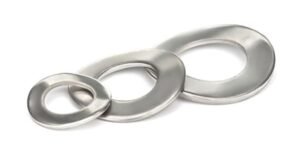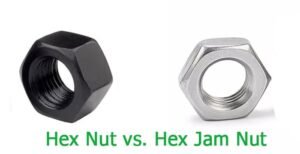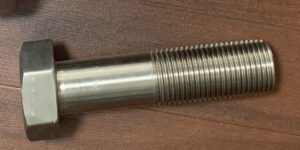You need to extend threaded rods, but welding’s too much, and buying custom parts is expensive. That’s where hex coupling nuts come in. These small but mighty fasteners solve connection problems quickly—no mess, no stress. Let me show you exactly how we use them in industrial projects.
A hex coupling nut is a long, internally threaded fastener designed to connect two externally threaded rods or pipes. With its hexagonal exterior, it allows easy tightening using standard tools. Commonly used in mechanical, structural, and utility projects, it enables rod extension, alignment, or connection without welding. Available in various sizes, materials, and finishes, they ensure flexibility across industries.
Before we dive into how coupling nuts work, you might also want to check out our Top 10 Hex Coupling Nut Manufacturers in China—a quick guide if you’re comparing suppliers or just looking for the best partner.
Now let’s look at why coupling nuts are such a favorite in the fastener world—from their design to the industries that depend on them.
1. What is Hex Coupling Nut?
A hex coupling nut is used to connect two threaded rods or bolts. It’s long and has threads inside both ends. The outside is hex-shaped, so you can tighten it with a wrench.
At Hengrui, we use these nuts when a single rod is too short. Instead of replacing it, we just add a second rod with a coupling nut. Simple, strong, and saves time.

2. What Materials Are Typically Used for Coupling Nuts?
Coupling nuts are made from different materials, depending on where you use them. For indoor or dry areas, carbon steel is a good choice. It’s strong and cost-effective. For outdoor use or wet places, stainless steel is better. It won’t rust easily.
We also offer nuts with special coatings—like zinc or hot-dip galvanizing—for extra protection. Brass and aluminum are also available if your job needs a lightweight or non-sparking option.
3. How Do Coupling Nuts Function in Fastening Systems?
Think of a coupling nut like a connector. You take two threaded rods, screw one into each side of the nut, and now they act like one long rod. This is useful when you’re building frames, supports, or anything that needs length adjustment. You don’t need welding or cutting. Just twist, tighten, and move on.
4. The Applications of Hex Coupling Nuts
We’ve seen coupling nuts used in many industries. They’re common in wind power, oil & gas, mechanical equipment, towers, and municipal projects. For example, our clients in Canada use them to extend rods in power station structures. Others use them in scaffolding, machinery bases, and even in public bridge projects. If your rods have threads, a coupling nut can connect them.
5. Standard Sizes and Specifications of Hex Coupling Nuts
Coupling nuts come in many sizes. We supply both imperial and metric threads. For example, sizes like 1/4″-20, 3/8″-16 (UNC), or M6, M8, M10, up to M36. The length of the nut depends on the rod size. A safe rule is that each rod should go in about 1.5 times its diameter. If you’re not sure, just send us your rod size—we’ll match the nut for you.
6. How to Choose the Right Size Coupling Nut for Your Assembly?
Start by checking the thread size and pitch. Are you using coarse or fine threads? Are the two rods the same size? Also, check how much load the joint will carry. For heavy use, choose a longer or heavy hex nut. If space is tight, a shorter nut may work, but don’t sacrifice safety.
7. What to consider when choosing a coupling nut?
Before buying, think about these things:
- What’s the thread size and pitch?
- How much torque or pressure will it handle?
- Will the nut be exposed to weather or chemicals?
- Do you need a strong grip or just basic alignment?
8. Best Materials and Coatings for Harsh or Outdoor Conditions
If your project is outdoors or near water, use stainless steel or hot-dip galvanized nuts. These materials resist rust and last longer. For indoor use or clean environments, carbon steel with zinc coating works well. If you’re working in areas with high vibration or chemical exposure, let us know. We’ll recommend the best finish and material to match your needs.
Frequently Asked Questions (FAQ)
Can you use a hex nut as a lug nut?
Technically yes, but not always recommended. Lug nuts are specifically made for vehicle wheels—they often have tapered ends. Hex nuts don’t, so the fit isn’t always safe or tight enough.
What’s the difference between long and short coupling nuts?
Long nuts allow more thread engagement—important in structural or high-torque applications. Short nuts save space but aren’t ideal for heavy loads.
How do coupling nuts with opposite thread direction work?
These are known as turnbuckle-style nuts. One side has a right-hand thread, the other left-hand. As you twist the nut, both rods either pull together or push apart. Great for tensioning systems.
Can a coupling nut have a set screw?
Yes! Some models come with a set screw in the middle. It locks the rods in place after tightening—extra safety for vibration-heavy or load-sensitive setups.
Conclusion
Hex coupling nuts might look simple—but getting them right matters. I’ve helped clients in wind, oil, automotive, and utility sectors find the exact right nuts for their projects.
Send me your drawing, spec, or even just a sample—we’ll quote it, customize it, and deliver it on time. That’s how we do it at Hengrui.






